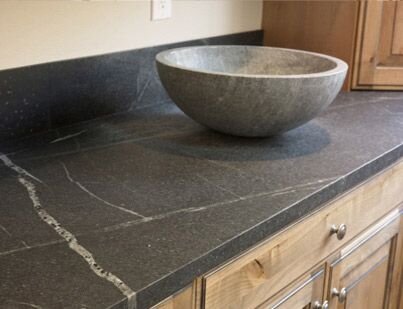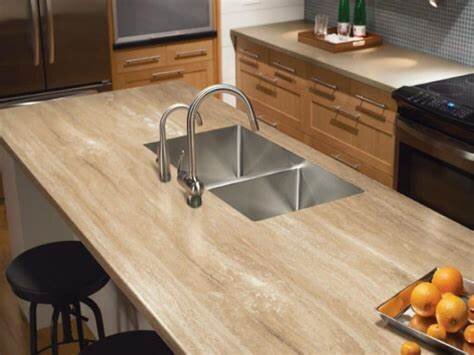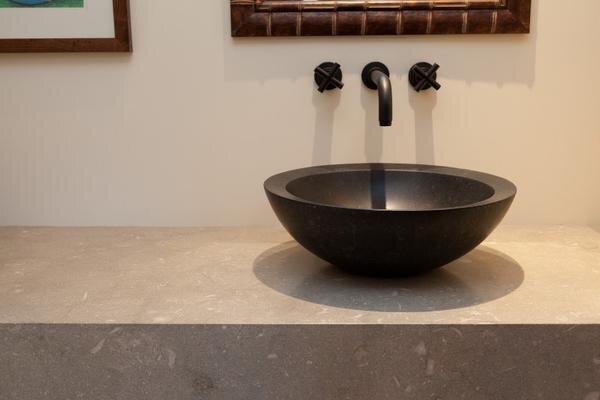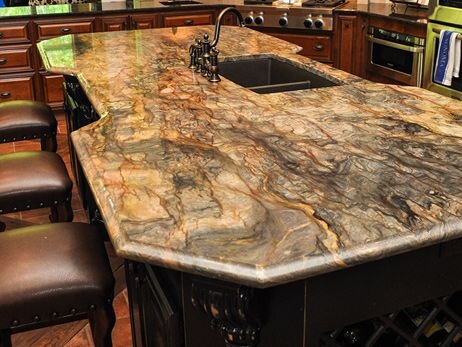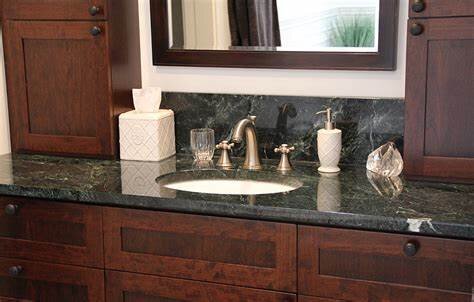Types of Natural Stone
Granite
Granite is a common type of felsic intrusive igneous rock that is granular and phaneritic in texture. Granites can be predominantly white, pink, or gray in color, depending on their mineralogy. The word "granite" comes from the Latin granum, a grain, in reference to the coarse-grained structure of such a completely crystalline rock. Strictly speaking, granite is an igneous rock with between 20% and 60% quartz by volume, and at least 35% of the total feldspar consisting of alkali feldspar, although commonly the term "granite" is used to refer to a wider range of coarse-grained igneous rocks containing quartz and feldspar.
Granite is a light-colored igneous rock with grains large enough to be visible with the unaided eye. It forms from the slow crystallization of magma below Earth's surface. Granite is composed mainly of quartz and feldspar with minor amounts of mica, amphiboles, and other minerals. This mineral composition usually gives granite a red, pink, gray, or white color with dark mineral grains visible throughout the rock.
The Best-Known Igneous Rock
Granite is the best-known igneous rock. Many people recognize granite because it is the most common igneous rock found at Earth's surface and because granite is used to make many objects that we encounter in daily life. These include counter tops, floor tiles, paving stone, curbing, stair treads, building veneer, and cemetery monuments. Granite is used all around us.
Uses of Granite
Granite is the rock most often quarried as a "dimension stone" (a natural rock material that has been cut into blocks or slabs of specific length, width, and thickness). Granite is hard enough to resist abrasion, strong enough to bear significant weight, inert enough to resist weathering, and it accepts a brilliant polish. These characteristics make it a very desirable and useful dimension stone.
Most of the granite dimension stone produced in the United States comes from high-quality deposits in five states: Massachusetts, Georgia, New Hampshire, South Dakota, and Idaho.
Granite has been used for thousands of years in both interior and exterior applications. Rough-cut and polished granite is used in buildings, bridges, paving, monuments, and many other exterior projects. Indoors, polished granite slabs and tiles are used in countertops, tile floors, stair treads, and many other practical and decorative features. Granite is frequently selected because it is a prestige material, used in projects to produce impressions of elegance, durability, and lasting quality.
Granitic rocks: This triangular diagram is a classification method for granitic rocks. It is based upon the relative abundance of feldspars (K-Na-Ca) and quartz. Mafic elements are not considered. It is modified after a classification chart prepared by the International Union of Geological Sciences. Image and modification by the United States Geological Survey.
Marble, Onyx, and Serpentine
Best for foyers, bathrooms, floors and hearths
Marble is a metamorphic rock found in the mountainous regions of most countries of the world. Marble quarried in India, China, Italy, and Spain represents the majority of marble, in terms of volume, that is utilized worldwide. Because of its beauty and elegance, marble is a popular choice for countertops, floors, foyers, fireplace facings and hearths, walls, and windowsills.
Marble with its inherent warmth, adds a sophisticated element to the area in which it is installed. Its naturally random appearance, engineering characteristics, and ease of maintenance makes it a premium choice for floors, wall claddings, table tops, wainscot, floors, and vanity tops. Many marbles are well suited for wet area application, which extends the versatility of this material to include tub decks and showers.
The calcite crystal is the basic building block of true marbles. The calcite crystal is vulnerable to attack by mild acids, including those commonly found in kitchen and bar settings. The user selecting marble for these applications should be aware of, and accepting of the maintenance and patina that is to be anticipated with this combination. Acid rain and other weathering elements can also affect exterior marble installations, and exterior applications are generally limited to white marbles, with some exceptions.
Often mistaken for marble is serpentine, which is actually magnesium-silicate based as opposed to calcite based. As a result of the different mineralogy and whole rock chemistry of serpentine, it exhibits greater acid resistance and abrasion resistance than does a true marble. These properties make serpentine a common choice for both kitchen counter and exterior application.
Onyx is often confused with marbles, yet it is a significantly different rock type. Onyx is a sedimentary rock, formed as stalactites and stalagmites in cave interiors. This formation method results in the cryptocrystalline construction of the rock fabric, and it is the size and uniformity of these crystals that contribute to the classic translucent property of most onyx varieties. While vulnerable to chemical and abrasive attack, the decorative appeal of onyx is perhaps unsurpassed by any other material.
Quartzite
Quartzite is a hard, non-foliated metamorphic rock which was originally pure quartz sandstone. Sandstone is converted into quartzite through heating and pressure usually related to tectonic compression within orogenic belts. Pure quartzite is usually white to grey, though quartzites often occur in various shades of pink and red due to varying amounts of iron oxide. Other colors, such as yellow, green, blue and orange, are due to other minerals.
Soapstone
Soapstone is a natural stone that varies in durability based on many factors, and it is accordingly considered one of the softest materials used in countertop constructions. It is completely stain and heat resistant. A traditional use of soapstone was the laboratory table top in chemistry labs. That application alone should serve as a great testimonial to the chemical resistance of the materials. Being of the softer varieties of dimension stone types, Soapstone is not known for particularly high abrasion or scratch resistance, yet it is often used for flooring and countertop products. Soapstone is highly heat resistant, and has been used in fireplace surrounds frequently to take advantage of this property. Maintenance is a little bit intensive as it does scratch easily, but fortunately, those scratches are easily disguised with a little bit of polishing. Nevertheless, soapstone does have a very elegant look unlike any other natural stone.
Travertine, Limestone, and Dolomitic Limestone
Limestone deposits exist in all continents of the earth. Despite the common and traditional reference to "travertine marble", travertine is really a type of limestone. It is actually the terrestrial (land) formed version of limestone, as opposed to the marine based formations of many other limestone varieties.
Featuring their soft earth tones, decorators integrating these stones into their design have great flexibility in selecting complimentary colors for other interior elements.
Limestone and travertine, like marble, are of a calcium carbonate base, and as such, are vulnerable to alteration by exposure to mild acids. A wide variety of stones are included in this group, and absorption varies from slight (<1%) to high (>10%). The combination of acid sensitivity and absorption limit the number of varieties that are suitable for countertop applications, and the user of limestone countertops should be well educated in its properties to accurately anticipate its behavior in service.
Limestone is a carbonate sedimentary rock that is often composed of the skeletal fragments of marine organisms such as coral, foraminifera, and mollusks. Its major materials are the minerals calcite and aragonite, which are different crystal forms of calcium carbonate. A closely related rock is dolomite, which contains a high percentage of the mineral dolomite, Dolomite was once referred to as magnesian limestone, a term now reserved for magnesium-deficient dolomites or magnesium-rich limestones.
Dolomite is based on the dual carbonate of calcium-magnesium carbonate, and the properties of this stone are influenced by this difference in composition. Dolomites generally have higher densities, lower absorptions, greater compressive and bending strengths, and higher abrasion resistance than the calcium carbonate based limestones. These property differences offer some application choices for dolomites where other limestone varieties are marginal or unsuitable performers.
